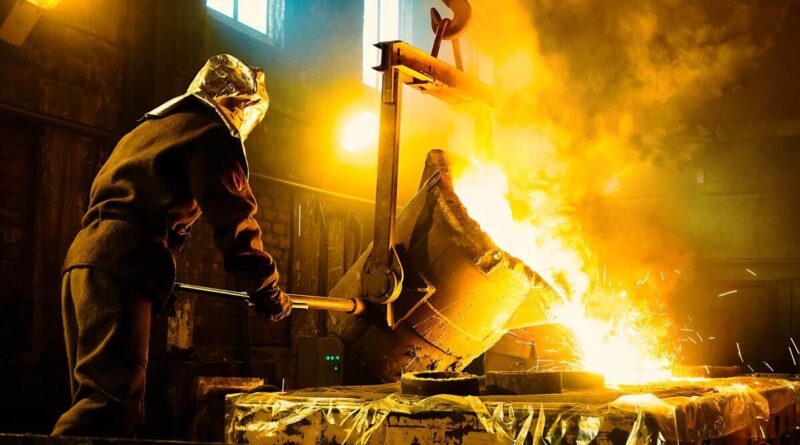Forging a New Path in Steel Production Innovations Shaping the Future of Manufacturing
Steel has been essential to industrialization for centuries, shaping our cities and everyday lives. However, as we enter the 21st century, the steel industry faces significant challenges. This blog post will delve into the latest innovations in steel production, providing insights and practical tips for manufacturers and engineers to stay competitive.
The Historical Significance of Steel in Manufacturing
Steel’s historical significance is monumental. Ancient civilizations, from the Romans to the Chinese, utilized early forms of steel for tools and weapons. The Industrial Revolution saw the material’s widespread adoption, thanks to the Bessemer process, which made mass production possible. Today, steel remains integral to manufacturing, but it’s time for a new revolution.

Current Challenges in Steel Production
Environmental Impact
Traditional steelmaking methods are notorious for their environmental footprint. The process involves high energy consumption and significant carbon emissions. According to the World Steel Association, the steel industry accounts for about 7% of global CO2 emissions. This is a substantial figure that cannot be ignored.
Sustainability Issues
In addition to its carbon footprint, traditional steel production also poses sustainability challenges. The raw materials, primarily iron ore and coal, are finite resources. The extraction and processing of these materials further exacerbate environmental degradation, affecting ecosystems and local communities.
Economic Concerns
The cost of traditional steel production is another pressing issue. Fluctuating raw material prices and high energy costs make it difficult for manufacturers to maintain competitive pricing. These economic concerns are driving the industry to seek more sustainable and cost-effective methods.
Innovations in Steel Production
Green Steel
One of the most promising advancements is the concept of green steel. This approach focuses on producing steel with minimal environmental impact. Companies are leading the charge, using electric arc furnaces powered by renewable energy sources. The result is a significant reduction in CO2 emissions, making green steel a viable alternative to traditional methods.
Hydrogen-Based Steelmaking
Hydrogen-based steelmaking is another groundbreaking innovation. This method uses hydrogen instead of carbon to reduce iron ore to iron. The byproduct of this process is water vapor, not CO2, making it an environmentally friendly alternative. Projects like HYBRIT in Sweden are already demonstrating the potential of hydrogen-based steelmaking to transform the industry.
Carbon Capture and Usage
Carbon capture usage (CCU) is also gaining traction in the steel industry. This technology captures CO2 emissions from steel plants and repurposes them for other applications, such as producing synthetic fuels or chemicals. Companies like Tata Steel are investing in CCU technologies to mitigate their environmental impact while creating new revenue streams.
Cutting Services to Boost Efficiency
Aside from these sustainability-focused innovations, advancements in cutting technologies, including precision plasma cutting services, are also driving efficiency and cost savings. For example, laser-cutting machines can precisely cut steel with minimal waste, reducing material costs. Additionally, plasma-cutting machines are faster and more energy efficient than traditional methods, making them an attractive option for manufacturers.
The Future of Steel in Manufacturing
Cost-Efficiency
The innovations in steel production are not just about being environmentally friendly; they also offer cost-efficiency. Green steel and hydrogen-based methods can significantly reduce energy costs, while CCU technologies provide additional income opportunities. Manufacturers can thus achieve a balance between sustainability and profitability.
Environmental Benefits
The environmental benefits of these innovations are undeniable. Reduced carbon emissions, lower energy consumption, and sustainable raw material sourcing contribute to a greener planet. These benefits extend beyond the steel industry, positively impacting the broader manufacturing sector and society at large.
Impact on Manufacturing Processes
The adoption of these innovations is reshaping manufacturing processes. Automated and digitalized production lines powered by AI and IoT are becoming standard. These technologies enhance precision, reduce waste, and improve overall efficiency. For manufacturers and engineers, staying abreast of these changes is crucial for maintaining a competitive edge.

The Potential of Innovations to Revolutionize Steel Production
The potential of these innovations to revolutionize steel production is immense. Green steel, hydrogen-based methods, and CCU technologies offer practical and sustainable solutions to the industry’s current challenges. Their successful implementation will not only reduce environmental impact but also enhance economic viability.
Actionable Next Steps
Manufacturers and engineers must stay informed about these innovations and consider integrating them into their operations. Engaging with industry leaders, participating in relevant forums, and investing in research and development are essential steps. The future of steel production is here, and it’s time to seize the opportunities it presents.
Conclusion
Now that you have a better understanding of the latest innovations in steel production, it’s time to take action. By embracing green steel, hydrogen-based methods, and CCU technologies, manufacturers can drive positive change and stay ahead of the curve.



